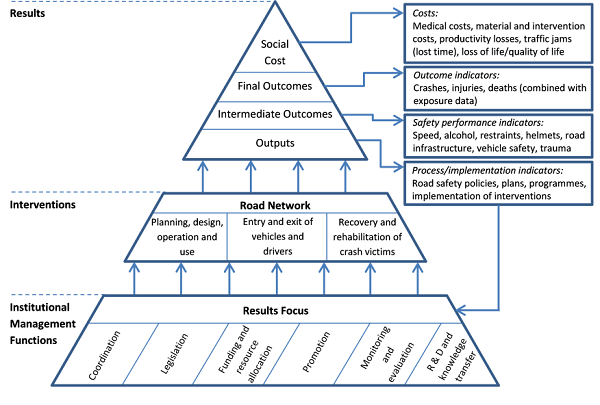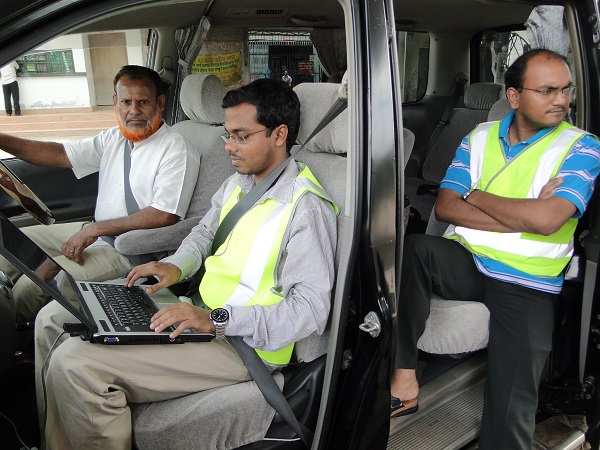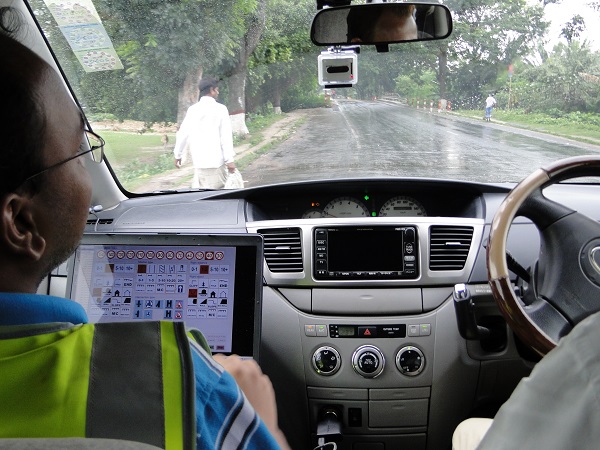





Road Safety Data
Reliable and accurate road safety data is essential in planning effective safety policy and treatments and monitoring performance.
Information based on road safety data can be used to:
- Raise awareness about the magnitude of road traffic injuries, and to convince policymakers of the need for action.
- Correctly identify problems, risk factors and priority areas that are contributing to crashes.
- Set goals, targets and Key Performance Targets (KPIs).
- Formulate strategy, plan appropriate actions and monitor performance over time.
There are several forms of data that need to be collected to manage safety.
A WHO good practice manual provides practical guidance on establishing crash data systems. Many cities, states, and countries have adopted or developed various systems for recording crash data. The World Bank and Global Road Safety Facility (GRSF) developed the Data for Road Incident Visualization Evaluation and Reporting (DRIVER) open-source system. DRIVER offers important opportunities for improved road safety data in many national and subnational jurisdictions, and its code is available free on the World Bank GitHub open source code repository. iRAP Crash Risk Maps use detailed crash data to capture the combined risk arising from the interaction of road users, vehicles and the road environment. The maps provide an at-a-glance and objective view of where fatal and serious injury crashes have occurred and where serious crash risk is greatest. Using a global methodology allows benchmarking where desired (e.g. crash rates on motorways; pedestrian crash rates in cities). Use of crash data is known as a reactive approach to safety,
The WHO good practice manual emphasizes that crash data alone is not sufficient to manage road safety. Other forms of data must also be collected, monitored, and used in combination with crash data in order to successfully implement safety strategies and plans and achieve goals and targets. Examples of data that need to be collected include:
- Road inventory and safety ratings.
- Motorised traffic speeds.
- Motorised and unmotorized flow.
- Enforcement.
- Seat belt and child restraint wearing rates.
- Helmet wearing rates.
- Alcohol and drug driving.
- Vehicle safety ratings.
- Vehicle roadworthiness.
- Post-crash response.
- Crash costs.
- Attitudes towards road safety.
The regional Road Safety Observatories exist to support countries in collecting and managing road safety data and monitoring road safety targets:
- Asia Pacific Road Safety Observatory (APRSO).
- Ibero-American Road Safety Observatory (OISEVI).
- Africa Road Safety Observatory (ARSO).
- European Road Safety Observatory (ERSO).
- Western Balkans Road Safety Observatory (WBRSO).
Case Studies
Related Images
 Data for safety management - PIARC. Image credit: PIARC
Data for safety management - PIARC. Image credit: PIARC Road inventory data collection in Bangladesh. Image credit: Greg Smith
Road inventory data collection in Bangladesh. Image credit: Greg Smith Road inventory data collection in Bangladesh. Image credit: iRAP
Road inventory data collection in Bangladesh. Image credit: iRAP








